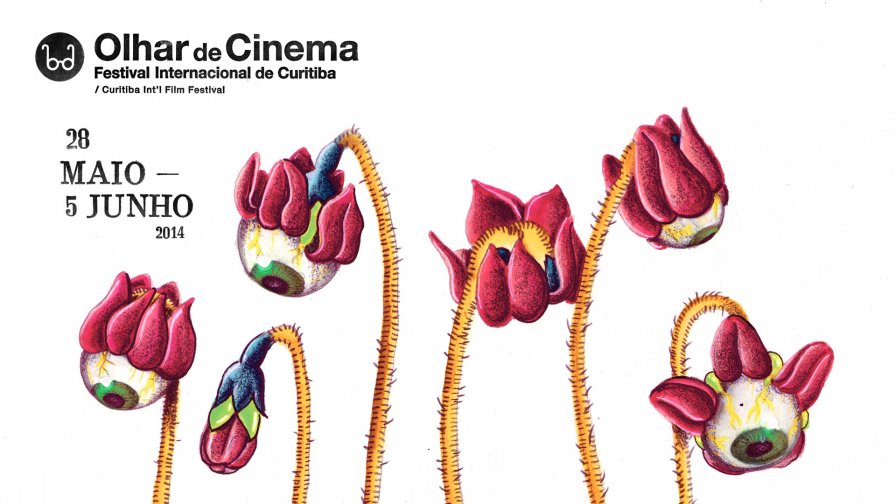The third edition of the Curitiba Int’l Film Festival took place during May 28 and June 5, and seemed keen on making its way into becoming a powerhouse name for the Brazilian and international festival circuit.
With more than dozens of films and seven thematic selections to choose from, I ultimately gave preference to two sections. The first one was the Other Views section, entirely dedicated to experimental cinema and which presented itself as a “privileged space for daring films” and where I was fortunate enough to finally see the late Aleksey German’s already-hyped-as-a-masterpiece-before-anyone-even-gets-a-chance-to-watch-it Hard to be a God.
The other selection that caught my attention was the New Views section, which featured debut feature films from new directors. I saw this as a great opportunity to glimpse, while still under halfway into the year, what cinema may soon offer in terms of experimentalism, new languages, new voices, and new points of view. As aptly described by the Festival catalog, this section was “a space devoted to narrative and aesthetic experimentation.”
Unfortunately this left me with little time to offer my full attention to the competitive exhibit, which consisted of 12 feature films and 11 short films. I did, however, manage to see two films in this section, as well as a handful of short films. Nonetheless, since I seem to be going through a non-narrative phase, most of what I watched consisted of experimental cinema. This is what I have to report:
A Spell to Ward off The Darkness (Other Views) [USA]
Dir. Ben Russell & Ben Rivers

A Spell to Ward off the Darkness was the first film I caught, and also was the one I had the highest expectations for since it features two of the leading names in contemporary experimental cinema collaborating on a three-act meditation on escape, seclusion, and loneliness. Added to my excitement is the fact that all three segments share the appearance of Robert Lowe (a.k.a. Lichens, experimental musician and Om collaborator), who appears as a rather ghostly member of a commune in Estonia, a lone hermit in the wilderness and member of a black-metal band. The only obvious link between these sections, besides the appearance of Lowe, seems to be the film’s title. The first segment suggests a communal and collective practice toward transcendentalism, and it’s the only part of the film with dialogue, be it of a spiritual awareness during an orgy or during an anarchist discussion concerning parties as temporary autonomous zones. In a Thoreauvian shift in tone, Lowe is seen wandering the Finnish wilderness, and with no more than a boat, a rifle, and a house he opts to burn down (a desperate attempt to light the darkness perhaps) and finally emerge as a member of a black-metal act playing on stage. The final half hour is hypnotizing and solely comprised of the resultant concert, filmed only by means of a couple of sequence-shots. Communal solidarity, reclusion, and art; or perhaps the embracing of darkness itself, morosely accepting the inevitably of our existential fate as Lowe removes his white colored war painting to roam into the midnight hour urban space in the film’s closing scene.
El Futuro (New Views) [Spain]
Dir. Luis López Carrasco
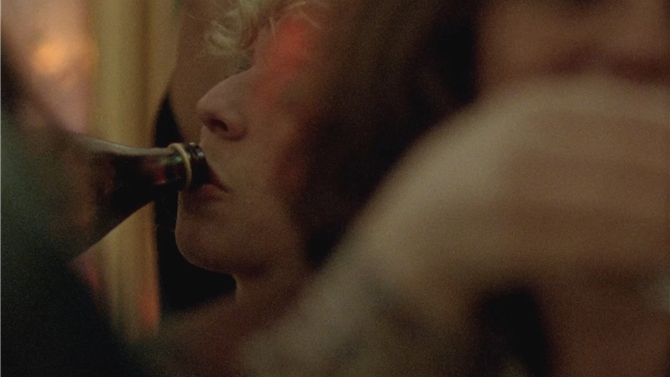
Speaking of parties as “temporary autonomous zones,” El Futuro chronicles in a direct cinema style (or cinema vérité, if you prefer) a gathering of friends at a party on the night of the PSOE socialist victory during the 1982 Spanish general elections. Curiously enough, the only time the theme is explicitly mentioned is in the film’s opening scene, wherein a radio-recording voiceover informs us of the election results over a black screen. For the rest of its 68 minutes most of the dialogue is inaudible. Instead we hear a never-ending playlist of 80s Spanish post-punk, which could be understood as either the sound playing in the actual party and thus silencing the voices of those present, or as non-diegetic music. That being said, the fact that the director opted to subtitle every single song playing in the background invites us to read the film through this peculiar stylistic choice, leaving the political elements subsumed. Another telling element lies in the fact that if the characters present at this house party seem to be celebrating the socialist victories (one of the rare audible dialogues is an argument between two young men debating whether ETA could be considered the military vanguard of the class struggle), they are clearly not from the proletariat. Filmed in grainy 16mm and with an amazing use of 80s dark/post-punk music dampening every conversation at the party, we are left with the impression of a small ray of optimism that shines among the academic left bourgeoisie during a period of extreme political turmoil in Spain. El Futuro is a bold experiment, aesthetically and in terms of narrative, and arrives at a fitting moment if we consider the recent political events in Spain. One of my personal favorites of the festival.
L for Leisure (New Views) [USA]
Dir. Lev Kalman and Whitney Horn
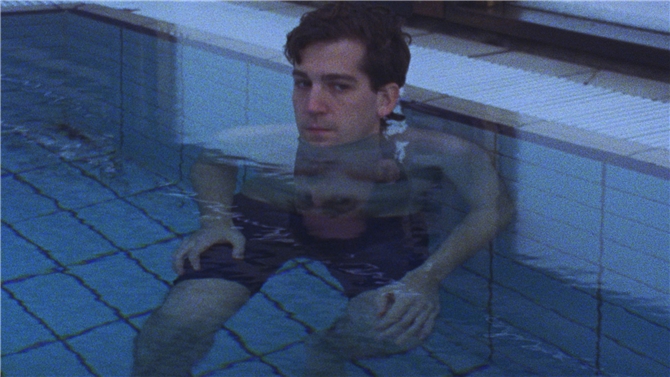
L For Leisure was screened right after El Futuro and also is a 16mm experimental take on youth lifestyle. The similarities end there, however, as Lev Kalman and Whit Horn’s first feature film (partially financed by a Kickstarter campaign) takes place during several school-calendar holidays in the 1990s among a group of graduate students in the humanities. I was reminded of Linklater’s Slackers, or a more self-aware and ironic Reality Bites. The film is full of aesthetic references to the 90s, often looking like a satirical 90s sitcom with its deadpan dialogue and infomercial acting style, like Spring Breakers on its mumblecore Phd break. In spite of its predominantly tongue-in-cheek tone, there are beautifully touching scenes, such as those filmed in Iceland, which provide glossy melancholic undertones coupled with the 16mm cinematography. One character summarizes the slacker-culture zeitgeist in one sentence: “I’m not hardworking or smart enough. I get bored and distracted.” At one point a young woman, an anthropology PhD student, speaks of her thesis to her group of friends in the woods: “I’m working with Shamans. Also, I’m learning to water ski.” Cut to the next scene, she’s drinking some booze, diva-style, on a boat while some bro-dude water skis behind her. I can understand some people hating this; I myself was laughing throughout and left craving for a custom-made chillcano, as one character at one point humors us with his custom cocktail recipe: pisco + Crystal Pepsi. I want to know what that tastes like.
Zanj Revolution (Competitive) [Algeria]
Dir. Tariq Teguia
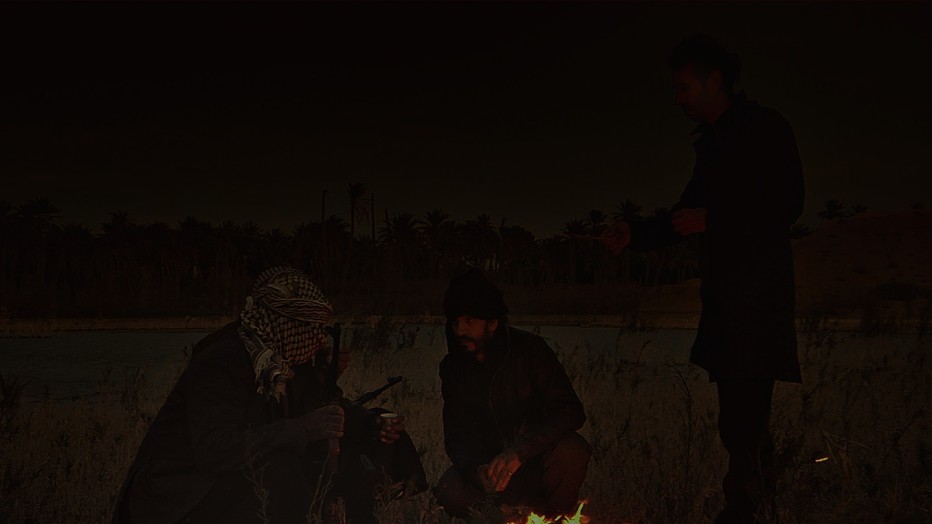
Ghostly appearances also make an appearance in Zanj Revolution, which concerns a journalist’s search for a forgotten revolution (or more precise would be to call it an insurrection) involving Zanj slaves against their rulers in the ninth century in the region contemporarily known as southern Iraq. I had never even heard of the historical occurrence and was sufficiently intrigued to enter the session. Unfortunately, while the Algerian film has the potential to create something unique within the themes of pan-Arabism political amalgamation (a very urgent issue undoubtedly), political identity, and cultural unification, it falls flat due to its lack of narrative focus and unnecessary story arcs, such as one confusing and badly acted noir-thriller storyline involving a group of comically evil wealthy American businessmen attempting to invest in Iraq. The film’s strongest moments rest in the journalist’s meditations on Arab culture and in the urgent sense of need for unity within the Middle-Eastern left. The journalist’s attempt to resurrect the representation and symbolism of a long-lost archeological rebellion comes off as a poetic desperate attempt to create the communal mythos of an Arab French Revolution. Even if I did enjoy the city images (I’m a sucker for films that dwell on city imagery and explore a specific urban space geographically located alongside a character’s inner turmoil) and the reflections from different characters regarding Beirut itself as well as the city of Baghdad, Zanj Revolution tries to encompass too many overarching themes at once, failing to develop a single argumentative thread.
Bloody Beans (New Views) [Algeria]
Dir. Narimane Mari Benamer
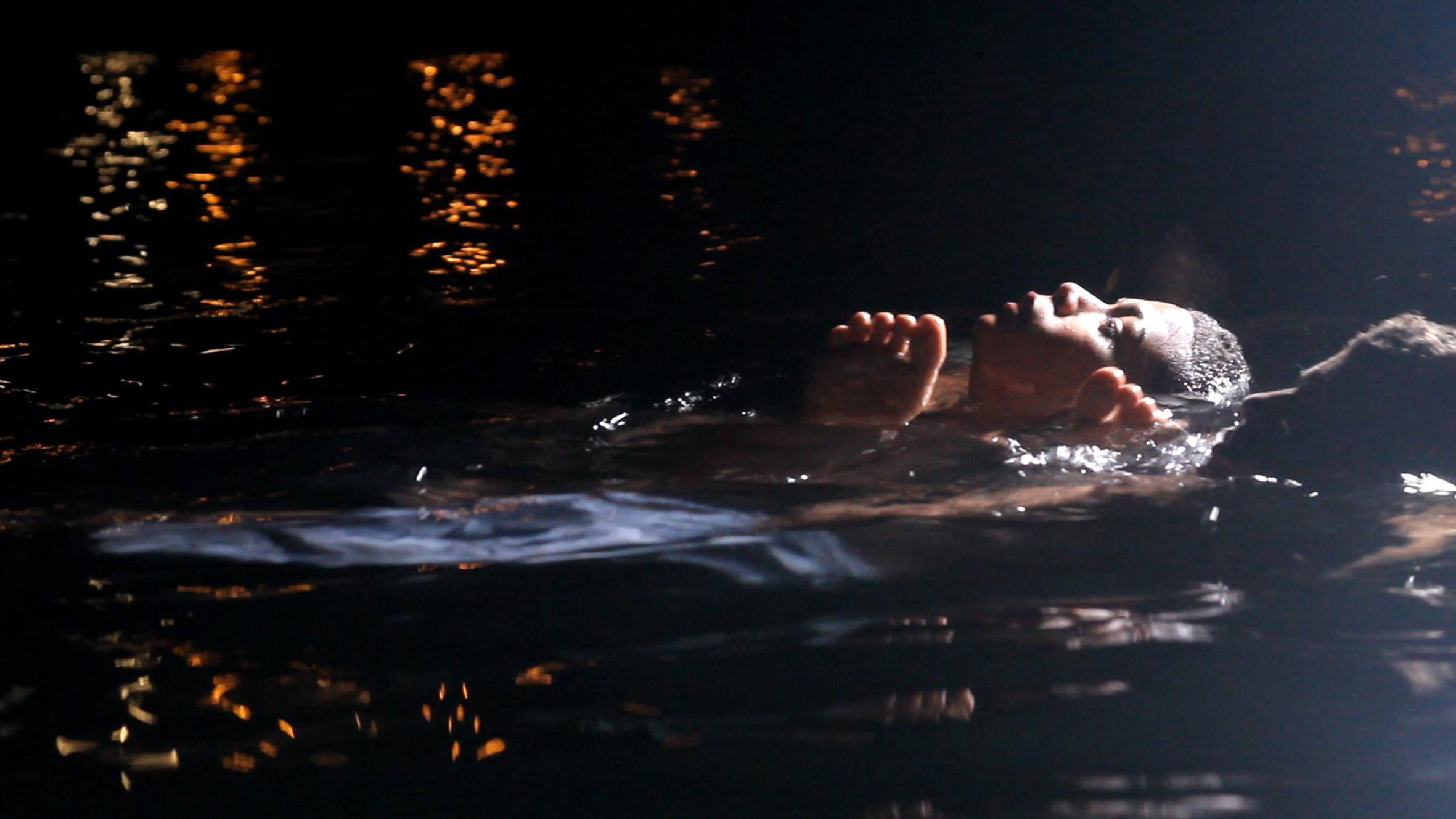
Another Algerian film in the festival, Bloody Beans takes place during the French-Algeria war and focuses on the point of view of a group of children on a beach in Algiers. If this sounds like yet another overused “kids during wartime” trope or “innocence vs barbarism,” you need not worry. Stunning camerawork and impressive acting from the children made this one shine from the festival’s experimental New Views section. While comparisons to Lord of the Flies will be inevitable, such associations are not entirely precise if we turn a more attentive eye to the fact that the children are not in any way at conflict with each other, and the chaos and brutality of war mostly come from visual allusions or faraway bombs. During their own time they seem to be just fine swimming in the sea, singing Arab songs and lying next to each other like lizards on a rocky beach. Their attempt to plot an attack against the French bases and their subsequence war tactic is a childish and desperate act: they are simply fed up with eating beans. In spite of its dark subject matter, Bloody Beans is mostly built on playful and juvenile foundations, such as the techno-pop soundtrack accompanying the über cool aesthetic of children war-painting each other while marching behind French enemy lines. They hear they have chocolate over there.
Mouton(Competitive) [France]
Dir. Gilles Deroo and Marianne Pistone
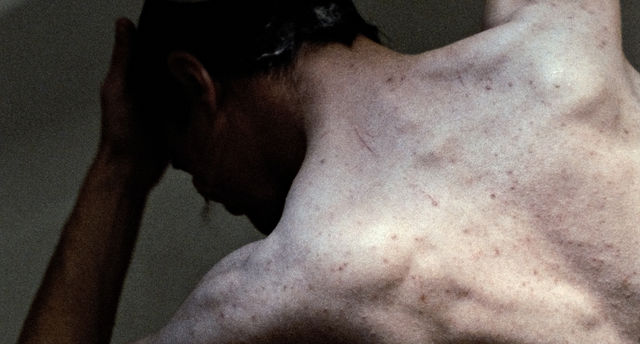
Mouton (a.k.a. Sheep) won the festival’s Artistic Contribution Award, and though I wasn’t able to watch every screening, it seems a fitting award for this oddball French drama. In spite of its solid camerawork, gloomy, washed-out pallet colors, and its particularly careful editing, there’s nothing particularly groundbreaking in Mouton’s visual composition. Anyone who has seen any depressing, naturalistic European art-house film in the past 20 years (I’m looking at you Dardenne Brothers) will immediately feel at home. Around the halfway mark, however, things take an unsettling narrative turn when the central protagonist exits the stage after a random and callous act of violence. At this point the until-then secondary characters assume the central light, and do so as a whole block (that is to say, embodying how small town life copes and attempts to continue on after such a bizarre tragedy). Memory, aftermath, and narrative experimentation serve as the driving force in a film wherein personal identification is almost impossible amid its detached, bleak, melancholic worldview and alienating characters. Did I mention there are a lot of stray dogs?
Hard to be a God (Other Views) [Russia]
Dir. Aleksey German

Aleksey German’s last film has been roughly 13 years in the making (six of these solely spent on shooting), and after much anticipation I can safely state I’ve never seen anything like it. Hard to be a God is (very) loosely based on the Arkady and Boris Strugatsky novel of the same name (the same writers responsible for Roadside Picnic, which in turn was the inspiration for Andrei Tarkovsky’s Stalker), and in spite of its three-hour running time no more than a few moments of voiceover in the opening scenes and the very last few minutes will provide the viewer with anything that resembles a plot. Here’s the gist: In the distant future scientists from Earth are sent to a remote planet, more specifically to its capital Arkanar, a place that closely resembles Earth during the 14th century. The inhabitants are just like humans, their world strikingly similar, but whereas Earth has reached a utopian state, Arkanar has yet to go through its Renaissance period and is submerged in the dark ages.
I strongly suggest you read a summary of the novel before going into this, since for the most part what you’ll see is Don Rumata — the main protagonist from Earth who must secretly observe this planet and yet never interfere in its historical course and is therefore doomed to roam this futuristic medieval wasteland as if a walking God — randomly encountering all types of mystifying characters in an even more confusing plot wherein the Greys are at war with the Blacks (or something like that). But what a journey this is! An radical onscreen assault of never-ending, visually stunning sequence-shots alongside what has to be one of the most mind-boggling scenic designs ever created — there is so much mud everywhere at one point I could feel as if my feet were actually wet — renders Hard to be a God one of the most uncompromising cinematic experimentations I have witnessed. It’s also sure to test the patience of many viewers (the 200-capacity room was almost jam-packed, but about half left before the end). Moreover, the world depicted is barren, dirty, and devoid of life or hope; every single human interaction emanates a continuous tension and potential for violence. It causes an already drawn-out film to feel twice as long, and its conclusion is a brutal, cathartic experience.
German passed away last year before having the chance to see his work being shown to a larger audience (the final editing process was concluded by his son and wife), but he has left us with an unforgettable cinematic experience. I for one cannot wait for the debate and reviews to start pouring in. And to watch it again.
